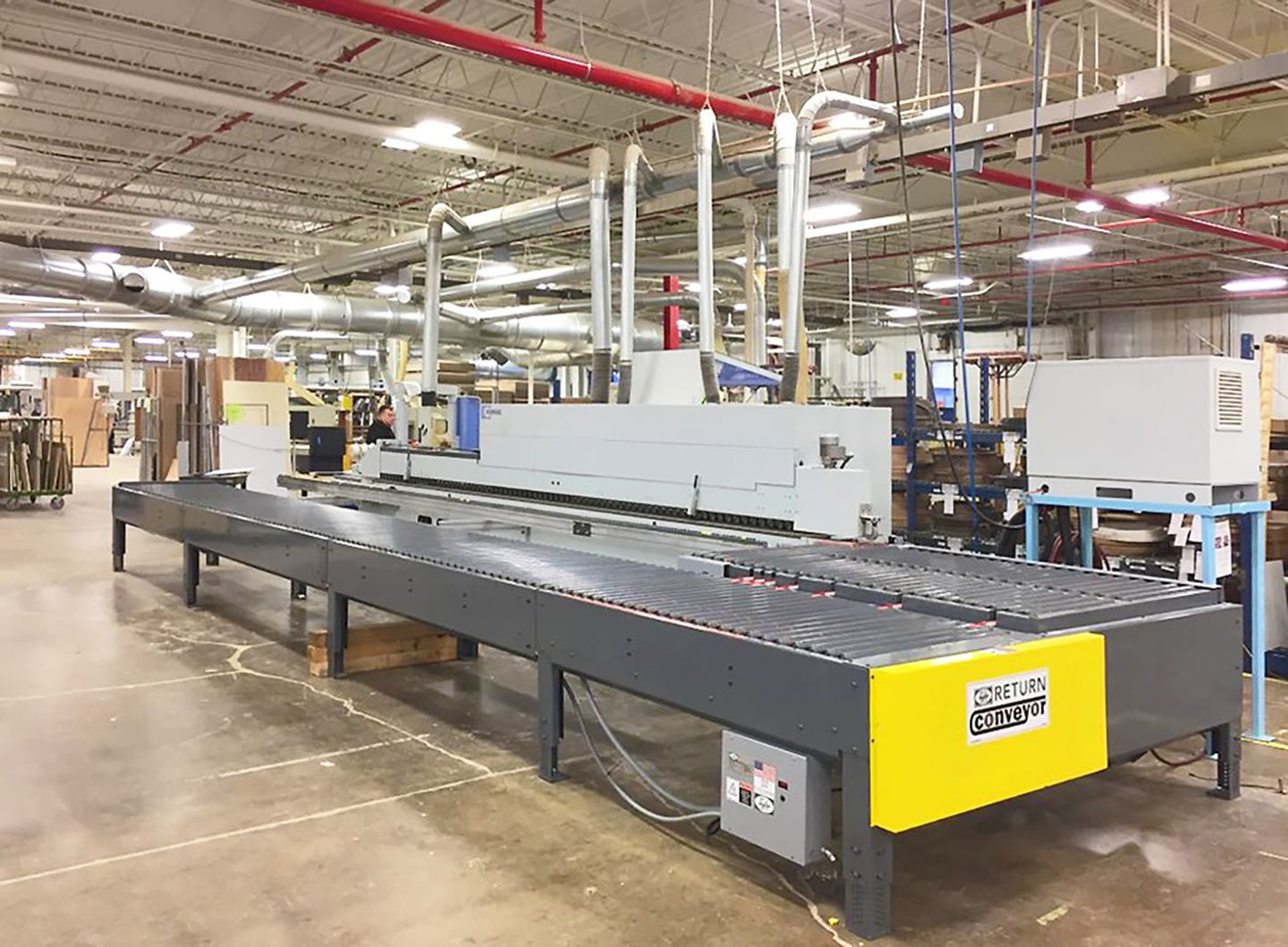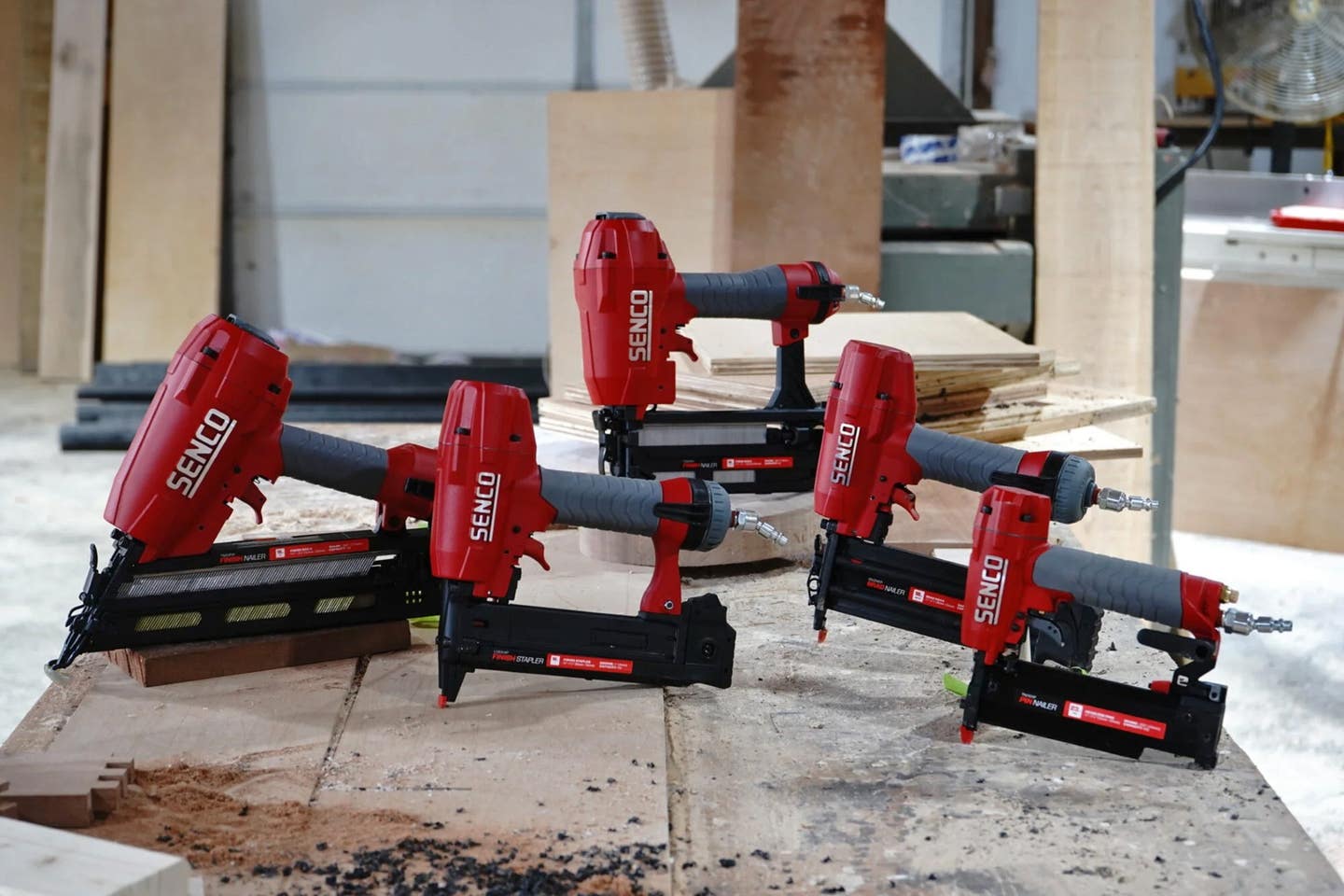Shop Solutions
Jigs and cutting guides for safer, more accurate and easily repeatable work.
Sam Maloof used to free-carve chair parts on the band saw, at times using neither the table nor the fence for support. It was both amazing and terrifying to watch. Sam was a pure artist with training in craft. Most woodworkers are the other way around – craftsmen with an artistic leaning. We prefer the predictability and precision of repeatable, controlled cuts. Luckily, those are factors that can be enhanced on traditional machines with the use of commercial or shop-built jigs and guides.
At the center of most woodshops is a table saw, and there are a number of essential shop jigs that have been developed and refined over the years for getting the best out of this versatile machine. Stationary equipment requires that the tool stays still and the material moves, so most jigs guide the work for accuracy safety, or both.
One of the best little jigs introduced over the last year or so is a collection of setup blocks from Rockler (item 66595) that let a woodworker dial in a perfect angle on the miter gauge to cut everything from four-sided, 90-degree assemblies such as picture frames to 12-sided staves for table pedestals or perhaps segmented turning. All that’s required is to slip one of the blocks onto the miter gauge bar and then swing and lock the fence snug against the jig.
The same company also came up with an inexpensive jig that helps a woodworker set the fence and the bit height on a router table, or the blade on a table saw, all for less than $20. The Router Bit Center/Depth Gauge (item 55010) uses a hook that snugs against the router bit shank to set the fence, so it replaces a tape measure and frustration with a hairline indicator to adjust for dead-on accuracy.
The designers at Kreg have been very active this past year, too. Their new and expanding Adaptive Cutting System is a portable, guided system that combines a high-performance plunge saw and a guide track. What’s notable here is that the system can be expanded to include the company’s Project Table, which adds another level of safety and precision. On the jobsite, it can replace a miter saw and a table saw. And the saw has anti-kickback protection that prevents the saw from moving backward on the track, should the blade strike a hard knot or bind.
For table saw users who make lots of repeat cuts for parts such as cabinet door panels, face frames and so on, Woodpeckers has introduced a new stop system that operates on both SawStop and Powermatic saws (more brands to come). Called the Rip-Flip, it attaches to the front fence guide and lets the operator lock in as many settings as needed. Stops just slide along a track and are locked in position with brass knurled knobs. Then the fence can be set, moved and reset in exactly the same position over and over again for production work.
Another innovation from Woodpeckers, the new Multi-Function Router Base, turns a portable router into an accurate portable milling machine complete with micro-adjustment. It fits most routers that have through holes for guide rods and can be used to mortise, make edge-guided cuts, or create circles and arcs.
Micro Fence has updated its circle and ellipse jig with some clever engineering that makes it easy for a shop to create oval photo frames, coffee tables – even dining and conference tables because the kit can be expanded to handle virtually any requirement. There’s even a vacuum clamp option that can deliver a mar-free surface. Coupled with Micro Fence’s fine-adjustment capability, this jig eliminates all the math that’s involved in cutting an ellipse and reduces it to two dimensions, essentially the long and short radii. The kit works with almost all major router brands.
A couple of new drill press and/or band saw fences from Mag-Tools use powerful, switched magnets to maintain their position on a cast iron or steel worktop. One magnet can lock one end of the fence and the operator can swing the other end to position and then lock it down. There’s a stop system that uses another switched magnet to lock on anywhere along the fence for making repeat parts, and that can also be used to hold down parts. The magnets hold the fence at a very precise 90 degrees to the table. Each fence can save setup time and can be installed or removed in a few seconds. The fence has a cut-out so it won’t interfere with the drill chuck and it can also be used on the band saw as a re-saw fence. The large version (item 81101371) is 21” long by 4-5/16” high and the small one (item 81101375) is 13” long by 2-1/2” high.
Another stop system, the WoodRiver brand Flip-Over fence adapter (item 172009) from Woodcraft, is an inexpensive and very functional solution that works with a matching T-track. Woodworkers can use the device to create a repeatable stop for a miter saw, table saw sled or custom miter gauge fence. Multiple stops can be used together and while it works best with 3-1/4”-tall fences, it still delivers excellent results with fences as short as 2”. The stop has an integral groove for attaching accessories (one could add a nut and bolt for micro-adjustments). The company also makes a similar L-shaped stop that simply locks in position, rather than being able to also flip up and get out of the way.
Last year, Bora Tool introduced a new worktop for its Centipede folding leg set. The top has a 3/4” bench-dog hole pattern for standard accessories and a whole range of jigs and fixtures designed to hold work for cutting and routing. This year, the company has added a solid tabletop (item CT22N) that folds neatly into a bag, so a woodworker can set up a 24” x 48” worktable in seconds that’s rated to hold up to 2,000 lbs. Best of all, two or even several tables can be set up together to create wide, long, or even L-shaped workstations.
One of the more sophisticated jigs on the market is the PantoRouter, which holds a standard portable router and controls its movements so the woodworker can make flawless and easily repeatable furniture joints. The company says that it delivers the precision of a CNC at a fraction of the cost, and it does so with a much shorter learning curve. The device offers superior dust collection, incredible repeatability and the capacity to mill parts for just about any joint one can imagine.
The Match Fit jig and fixture system from MicroJig lets the woodworker “clamp anything to anywhere”. For use with table saws, router tables and band saws, the system is based on shop-made dovetail grooves that house a variety of clamps and fixtures that the company supplies. A woodshop can mill the groves into an assembly benchtop or a sliding platform on a table saw, and then locate clamping pressure almost anywhere in the field without relying on bench-dog hole patterns or clamps that don’t quite reach far enough. The system should work well for shop-built drill press tables, too.
General Tools (generaltools.com) has a hand tools section in its online catalog that includes a number of jigs and cutting guides for dovetails, pocket holes, fence stops and face frame assembly, to name a few. One particularly interesting jig here is the E-Z Pro for cutting crown molding (item 881). It basically holds the molding on the miter saw in the same orientation that it will be on the wall, which makes it a lot easier to cut perfect inside and outside miters for corners. The attraction here is that it eliminates all those difficult angle calculations, coping of joints, or confusing compound-angle cutting. And it comes with an adjustable Angle Finder that easily shows the exact angle to cut.
Woodworkers who like (or need) to build jigs and cutting guides may be interested in Lee Valley’s 149-piece assortment of jig and fixture hardware (item 12K7990, $59.50). The kit comes in a storage box and is well balanced – there are 60 T-bolts, 16 four-prong T-nuts, 16 threaded inserts, ten round insert knobs, six 2” T-insert knobs, six four-arm insert knobs, six four-arm bolt knobs, four 5-arm insert knobs, four five-arm bolt knobs and 20 washers.
There are hundreds of commercially available jigs and cutting guides that can make a day in the shop a bit easier. And websites such as Facebook, YouTube and Pinterest are great resources for finding shop-built jigs that are not only useful but often quite enjoyable to build and adapt. The trick is to not spend so much time playing that the real woodshop work is put on hold.
This article was originally published in the June 2021 issue.







